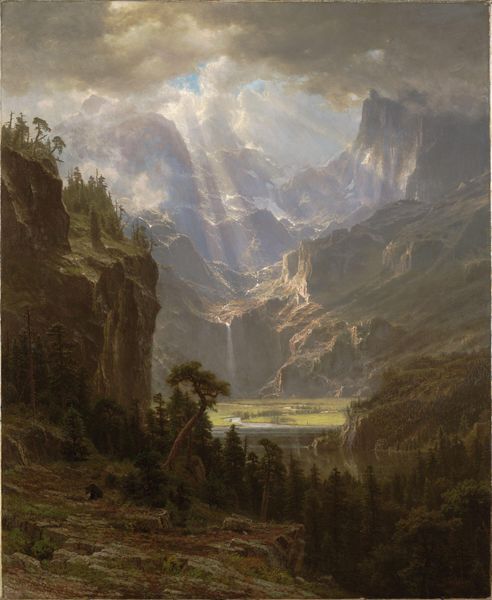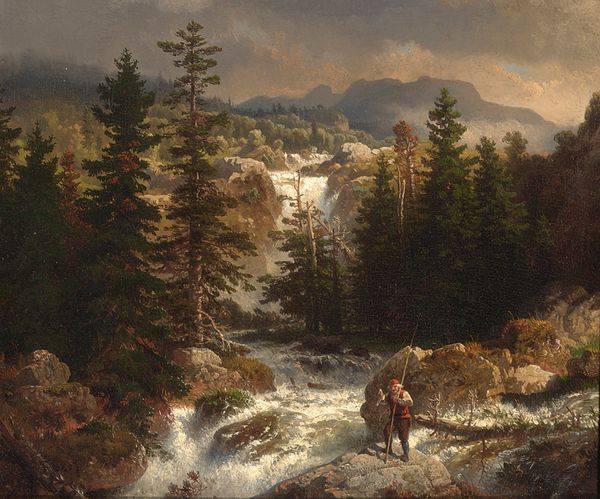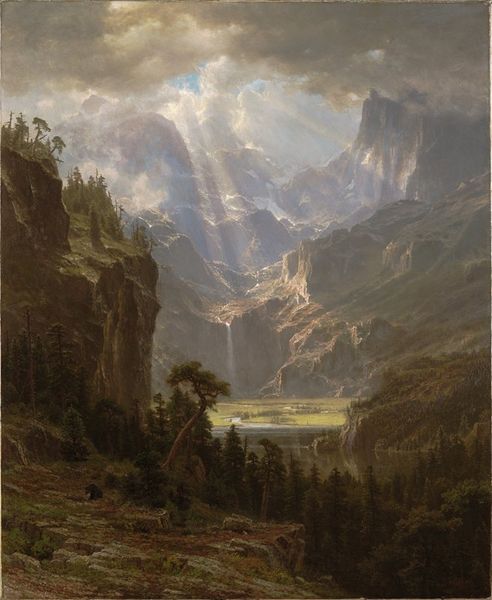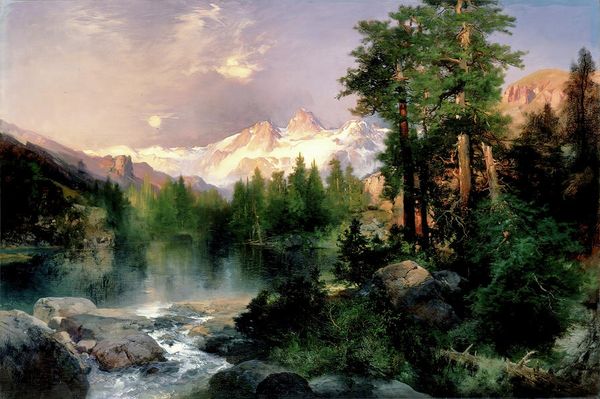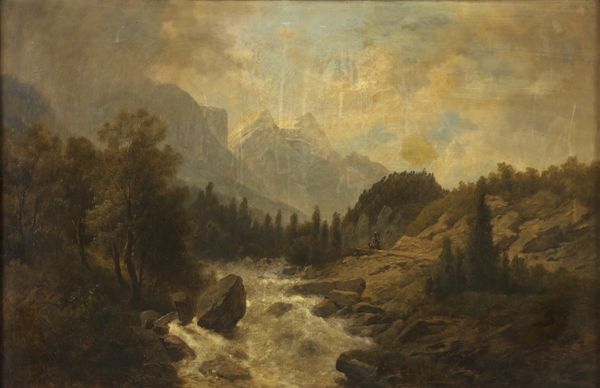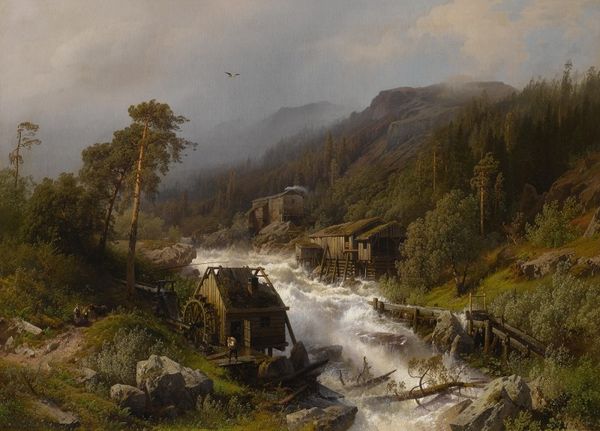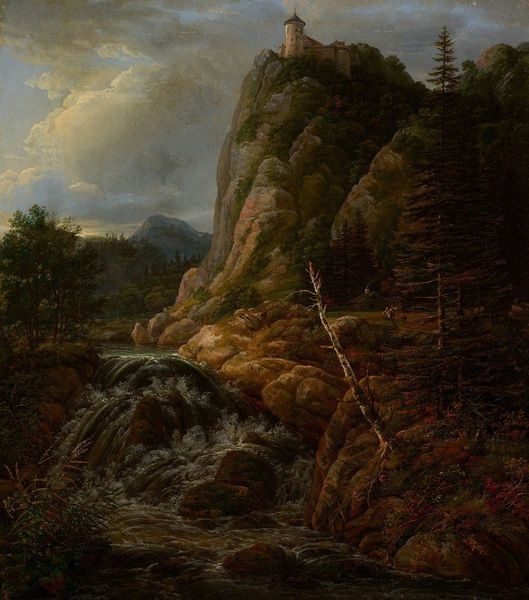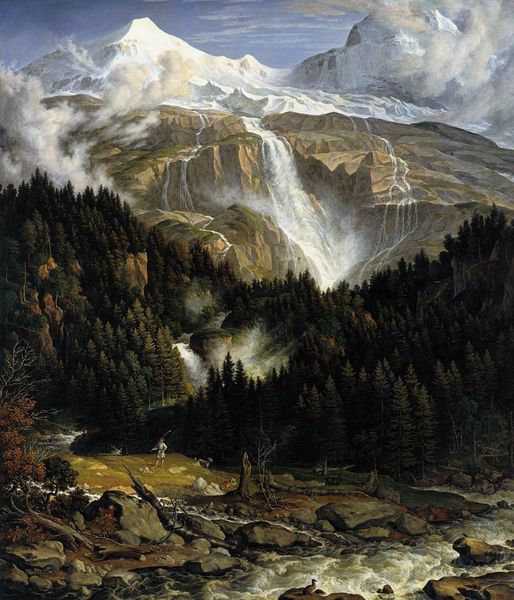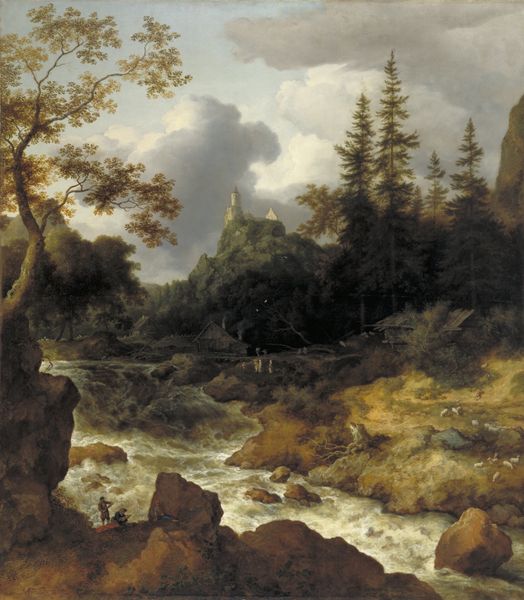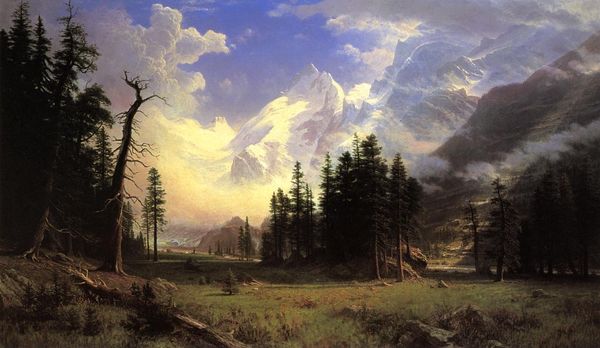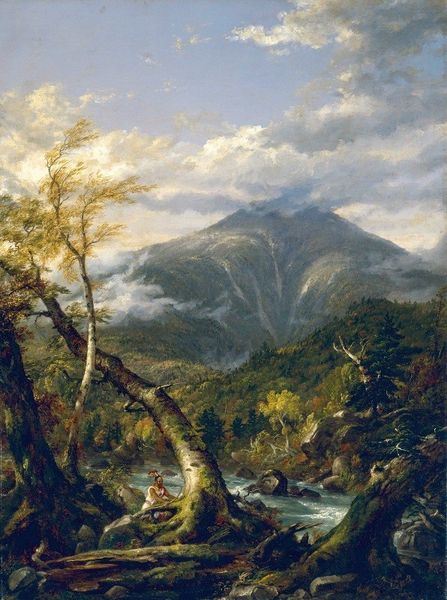
Copyright: Public domain
This landscape with livestock and waterfall by Hans Gude presents a bridge as a key motif, laden with symbolic weight. The bridge here is more than a mere crossing; it is a symbol of transition, linking the known and unknown. In antiquity, bridges were sacred places, often dedicated to gods who governed passage and safe journeys. Think of the Roman Pontifex Maximus, the high priest, whose title literally meant "the greatest bridge-builder," and recall that this title was later bestowed on the Pope. The image of a bridge resonates in various forms across time. We find it not only in literal crossings but also in metaphorical representations, such as the "Rainbow Bridge" in Norse mythology that connects the earth to the realm of the gods. In Gude's painting, the bridge is not merely functional, but stirs a primal connection to the quest for transcendence. The bridge carries deep psychological implications, representing our innate desire to overcome obstacles and connect different realms of experience. This motif has continually resurfaced, evolving with each telling yet always retaining its essence as a symbol of hope, possibility, and the human drive for connection.
Comments
No comments
Be the first to comment and join the conversation on the ultimate creative platform.

